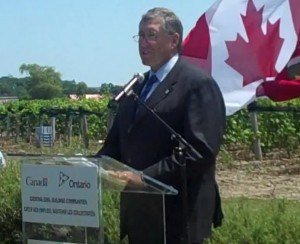 “It helps no one if broadband subsidies flow to ‘overbuilders’….” Matt Polka, American Cable Association CEO
“It helps no one if broadband subsidies flow to ‘overbuilders’….” Matt Polka, American Cable Association CEO
“We will have government-created competition.” Cable One senior vice president and chief sales and marketing officer Jerry McKenna
America’s cable companies are having fits of anxiety over $7.2 billion dollars in broadband stimulus money that isn’t just going to fall into their laps. “There are a lot of strings on that money,” one executive told Multichannel News this week in a piece that truly feels for the plight of the nation’s cable operators, concerned that billions of dollars could end up stimulating competition in the rural broadband marketplace.
The horror.
Granted, there are some concerns with some specific conditions which will likely represent little or no impediment to big regional telephone companies, and those like Frontier Communications, which specialize in servicing rural customers (and will likely apply for a substantial amount of broadband stimulus money), but will potentially lock out a lot of “mom and pop” operators.
Among them are requirements that a “first lien” be granted to the Rural Utilities Service, a USDA government-run administrator of the broadband program. That has some banks, which small providers would likely use to finance some up front construction costs, up in arms. A first lien would leave the government first in line for any asset recovery from a failed project, not the bank.
But some small providers are also upset with a requirement that any completed projects be held within that provider’s portfolio for a minimum of 10 years. That provision, according to government officials, was added to prevent bottom feeder “flippers” from creating new companies tailor-made to fit broadband grant criteria, receive substantial amounts from the government to build projects, and then quickly sell them to the highest bidder when complete, pocketing the profits.
But the overwhelming concern expressed by 70% of cable operators surveyed by the American Cable Association at their ACA Independent Show held in late July is the fear of competition.
| Are you concerned about the government funding competitors in your market? | |
| Yes | 70% |
| No | 29% |
Many small-operator executives said that they feared the broadband stimulus would create competition — one said the money would go to “charlatans who would ruin the business.”
Cable One senior vice president and chief sales and marketing officer Jerry McKenna, who after his panel session at the show said that his MSO will likely apply for two or three broadband projects, was even more direct.
“We will have government-created competition,” he said.
As a result of the realization that free government money was simply not going to fall from the sky into their hands, many of the nation’s cable operators have stomped their feet and thrown fits, finally resulting in more than half declaring they were either not likely or absolutely certain they would not apply for a penny. It’s their hope the federal government will see a dearth of applications, assume the process is too onerous, and dramatically loosen up the rules.
“If they get an overwhelming number of applications, the administration will see this [program] as a success,” American Cable Association director of regulatory affairs Ross Lieberman said at the show. “If there are not that many applicants, if there is no incumbent interest, we can expect changes to this program.”
Changes have already been made at the behest of lobbyists, who are now given a freer reign to pursue broadband policies more amenable to their clients. Also changed are the definitions of what constitutes an underserved or unserved area, and with the broadband mapping project at risk of being run by the providers themselves, those definitions could eventually become meaningless anyway.
But providers fearing an “overbuilder,” a competing company that strings its own cables and provides true competition, need not panic just yet. As they nail bite about the decision to apply or not apply for broadband stimulus money, risking if they don’t a competing provider may, the government has graciously provided a 30 day window for incumbent providers to submit a formal challenge of other applicants for up to 30 days after the deadline.
Every application will be publicly posted online at BroadbandUSA.gov.


 Subscribe
Subscribe


